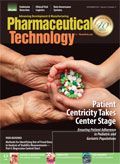Reducing Medication Errors
Experts from Colorcon share insights on how manufacturers can play a role in minimizing the risk of medication errors by ensuring that the medicines they develop are well differentiated, especially between dosages of the same product.
Oral drug delivery continues to be the preferred route of administration because of its convenience and patient acceptance. The vast majority of marketed products today are tablets, observes Gretchen Bedford, global market research analyst at Colorcon. “As medicine advances, so do specialized solid-dosage forms with drug combinations and layered, extended- and immediate-release tablets, as well as enteric-coated tablets and capsules,” she says.
Charlotte Miller, film coatings manager, Colorcon EMEA, notes that the number and variety of medicines available are increasing. “Patients are now taking multiple medications and living longer,” she says. “Administering medicines may be carried out by several healthcare professionals, and communication failures can lead to mistakes.” Miller points out that medication errors are reported to harm 1.5 million people every year, some of which result in sickness, injury, and death (1). “It is estimated that between 2–14% of patients are admitted to hospitals due to medication errors, and approximately 1–2% of those patients are harmed as a result (2),” she continues, adding that these numbers are alarming considering that most, if not all medication errors could be prevented. “Further, these statistics only include those medication errors that have actually been reported,” she says, but highlights that awareness and better reporting have resulted in the increased number of recorded medication errors. “Many of the regulatory authorities have issued guidance or directives (3, 4) to ensure that any errors, no matter how small, are captured, as well as to ensure learnings are made to prevent reoccurrence of incidents.”
Miller notes that FDA and EMA have published guidance for industry to minimize the risk of medication errors (5, 6). “These guidances aim to address the design of drug products to promote the safe and correct use and minimize or eliminate hazards contributing to medication errors at the product design stage,” she says. “The FDA guidance conveys the current thinking about how a safety-by-design approach to new product development can be an effective tool in reducing the unintentional medication errors that result in 44,000–98,000 deaths in the United States each year (7). Recommendations include, but are not limited to, the adequate distinction between immediate-release and extended-release or delayed-release products, differentiation between multiple dosage strengths, and inclusion of clear, legible imprints to help identification. The size, coating, and palatability of the tablets should also be considered to ensure tablets are easy to swallow, safeguarding patient compliance.”
According to Miller, manufacturers have a duty to ensure the medicines they develop are well differentiated, especially between dosages of the same product. “Medication is more easily identified if it has a distinctive appearance, and single or multiple visual indications are a defense against swallowing the wrong tablet,” she says. “For many, not just the elderly and their caregivers, color alone can serve as that great safety net, an easy way to help reduce potential errors. For those who take multiple medications, the drugs can be safely commingled in a pill-sorting container where patients or caregivers rely on color or other visual clues. Familiar colors, shape, and size also help patients remember proper dosing.”
Miller adds that differentiating tablets does not have to be costly, but it does require the right resources at the right time. “Colorcon’s unique tablet design service, BEST, enables pharmaceutical companies to explore options and evaluate tablet shapes and sizes for ease of swallowing, as well as color for differentiation,” she says. “Risk assessment studies using the proposed tablet(s) to simulate in-use testing can also be conducted with patients, pharmacists, and caregivers to identify any difficulties in identification of the product.”
References
1. The National Academies of Science, Engineering, and Medicine, “Medication Errors Injure 1.5 Million People and Cost Billions of Dollars Annually,” Press Release, July 20, 2006.
2. L.L. Leape, Journal of the American Medical Association (JAMA), 272 (23) 1851–1857 (1994).
3. MHRA, Stage Three: Directive-Improving Medication Error Incident Reporting and Learning (March 2014).
4. EMA, Streamlining EMA Public Communication on Medication Errors (November 2015).
5. FDA, Guidance for Industry: Safety Considerations for Product Design to Minimize Medication Errors (April 2016).
6. EMA, Good Practice Guide on Risk Minimization and Prevention of Medication Errors (November 2015).
7. L.T. Kohn, J.M. Corrigan, M.S. Donaldson, eds. To Err Is Human: Building a Safer Health System, Institute of Medicine, National Academies Press, Washington DC, 2000, accessed Oct. 4, 2017.
Article Details
Pharmaceutical Technology
Vol. 41, No. 11
November 2017
Page: 20
Citation
When referring to this article, please cite it as A. Siew, “Reducing Medication Errors," Pharmaceutical Technology 41 (11) 20 (2017).

Drug Solutions Podcast: A Closer Look at mRNA in Oncology and Vaccines
April 30th 2024In this episode fo the Drug Solutions Podcast, etherna’s vice-president of Technology and Innovation, Stefaan De Koker, discusses the merits and challenges of using mRNA as the foundation for therapeutics in oncology as well as for vaccines.